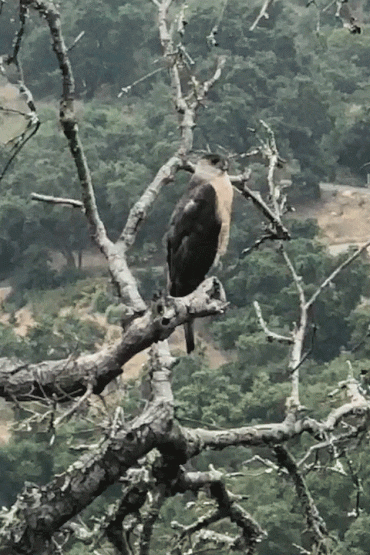
by Karen Telleen-Lawton, Noozhawk Columnist, Read the original column at Noozhawk.com
Early this morning a black phoebe alighted on my upper railing just a few feet from me, repeating its classic perky chirp.
Typically it’s house finches, pigeons, and the oak titmice nesting nearby that alight on this upstairs deck. I was surprised and pleased by the tuxedo-dressed phoebe.

Then I remembered two friends, recently departed, who have helped me appreciate such ordinary magic moments. Fred Emerson and Joan Easton Lentz, eminent local birders, both passed away this summer after illnesses.
Dr. Emerson was my first birding teacher, in Botanic Garden classes in the early aughts. Lentz I came to know well while researching and writing “Canyon Voices.” Each had a way of imparting knowledge that conveyed their excitement in subtle but indelible ways.
I came to know Fred in his third career. He was first a wildlife biologist for the Tennessee Valley Authority in the 1960s. After studying for an M.D., he practiced emergency medicine in Denver. Then he moved to Goleta Valley Hospital and urgent care at the UCSB Student Health Center. He retired from paid work in 1992.
As a naturalist at the Santa Barbara Botanic Garden and later Sedgwick Ranch in Santa Ynez, Fred taught listening. I learned to listen to nature’s clues and cues in his birding classes.
Birding opened me to the idea that learning did not always come from a book or classroom. Most might not consider that an insight, but as a resolute engineering student of the 1970s I was more familiar with methodology than serendipity.
Field knowledge, by contrast, is often conveyed on a saunter through the field or woodland. On a morning bird walk, Fred would listen first, like an old country doctor tuning into his patient’s description of symptoms for clues. Nature is always talking.
Last week, for instance, I brought my computer out on the patio just after noon. A quilt of fog was pulling back to reveal the already in-process day. As the sun burst through, the dense quiet immediately dispersed into phrenetic bird activity.
A half-dozen blue-gray gnatcatchers began swirling around the top of a slender oak. As I watched the gnatcatchers, the unmistakable “ank” sound of a nuthatch caught my ear.
Two oaks up we spied the white-breasted male zigging head down around the trunk. Then squirrels let out an alarm. I looked around and spotted some low oak branches gyrating wildly on the other side of the yard.
In the next moment, the commotion was revealed in the loud, close “keer” of a red-tailed hawk.
Without Fred’s mentoring, I would have typed away, missing the event.
Joan recognized this sort of scenario, growing up in Rattlesnake Canyon in the 1940s and ’50s. She and her sister would walk down to the Santa Barbara Museum of Natural History to push the rattle button on the rattlesnake exhibit.
From a family of great naturalists (daughter and granddaughter of Robert O. and Robert E. Easton), field knowledge was in her blood.
Joan called herself a quiet environmentalist, but her natural passion dovetailed with advancing climate disruption to inspire her to impart her knowledge generously.
She taught birding classes, organized the annual Christmas Bird Count, and published six books. In “A Naturalist’s Guide to the Santa Barbara Region” she shared her angst:
“As we humans seize more and more wildlife habitat over time, the birds begin to disappear,” she wrote.
Under her wing I explored Rattlesnake Canyon in new ways. I spotted my first phainopepla in a birding excursion with her. The glossy dark bird with elegant white wing patches rocketed by us to dip into the creek for a drink. It was just nature, doing its thing, but it was a wonder to witness.
Both Joan and Fred received Wildling’s prestigious Wilderness Award: Fred with his wife Nancy in 2008. and Joan a decade later in 2018.
Santa Barbara and the planet are worse off without them. Nonetheless, thanks to their gifts as teachers, many locals better appreciate the sensory extravagance of nature, and the necessity to protect the wild places.

Karen Telleen-Lawton, Noozhawk Columnist
Karen Telleen-Lawton is an eco-writer, sharing information and insights about economics and ecology, finances and the environment. Having recently retired from financial planning and advising, she spends more time exploring the outdoors — and reading and writing about it. The opinions expressed are her own.

